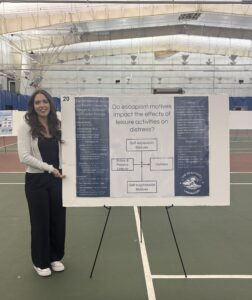The Influence of Active and Passive Leisure on Distress as Moderated by Escapism Motives
Examines how different leisure activities and escapism motives interact to influence daily distress among college students, using a 10-day online daily diary design.
Study Overview:
- Type of leisure activity (activities during free time)
- Active leisure (e.g., any type of physical activity)
- Passive leisure (e.g., sedentary activities like watching TV or listening to music)
- Motives for leisure involvement
- self-expansion motives (escape distress by promoting positive emotions)
- self-suppression (escape distress by suppressing negative emotions)
- Daily distress levels
Purpose and Goals:
- To determine how active vs. passive leisure influences end-of-day distress.
- To explore whether escapism motives (self-expansion vs. self-suppression) moderate this relationship.
- To identify patterns of leisure engagement that are most beneficial for mental well-being among college students.
Conferences:

